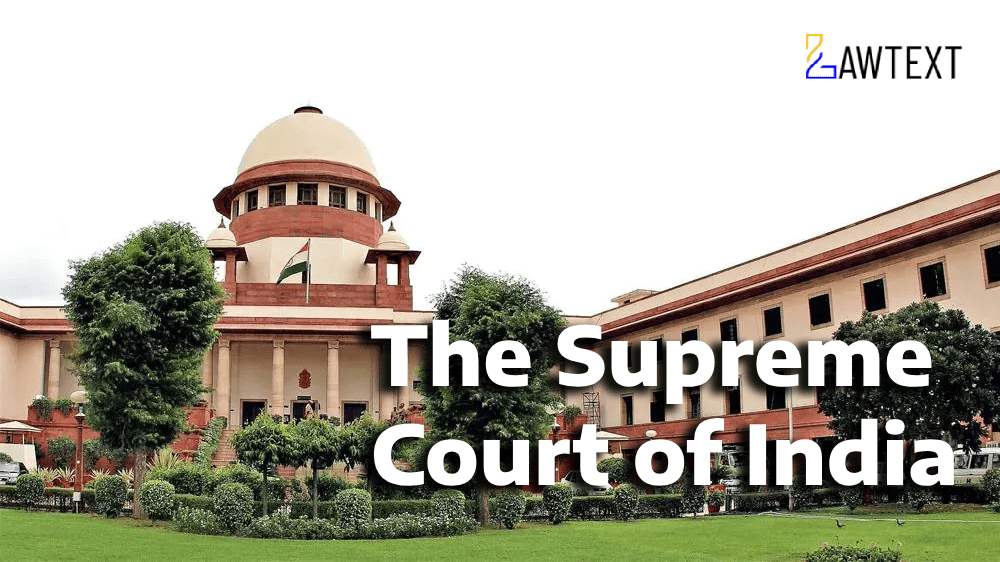

The Supreme Court allowed the appeal and acquitted the appellant of all charges. The Court held that the prosecution failed to establish a complete chain of circumstantial evidence, and the absence of motive further weakened the case. The "last seen together" theory was unreliable due to the time gap, and the discovery of the body was not conclusively linked to the appellant. The Court emphasized that in cases based on circumstantial evidence, each link in the chain must be proved beyond a reasonable doubt, which was not done in this case.
Major Acts:
Indian Penal Code, 1860 (IPC) – Sections 302 (Murder), 366A (Kidnapping of a Minor Girl), 201 (Causing Disappearance of Evidence), 34 (Acts Done by Several Persons in Furtherance of Common Intention).
Code of Criminal Procedure, 1973 (CrPC) – Section 313 (Examination of the Accused).
Indian Evidence Act, 1872 – Sections 25 (Confession to Police Officer Not to be Proved), 26 (Confession by Accused While in Police Custody), 27 (How Much of Information Received from Accused May be Proved).
Nature of the Litigation:
The appellant, Md. Bani Alam Mazid, was convicted by the Sessions Court and the Gauhati High Court under Sections 302, 366A, 201, and 34 of the IPC for the kidnapping and murder of a minor girl, Marjina Begum. The case was based on circumstantial evidence, including the theory of "last seen together" and the discovery of the victim's body.
The appellant challenged the conviction, arguing that the chain of circumstantial evidence was incomplete and that there was no motive for the crime.
Reason for Filing the Case:
The appellant filed a criminal appeal before the Supreme Court seeking acquittal, contending that the prosecution failed to prove the circumstantial evidence beyond a reasonable doubt. The High Court had upheld the conviction based on the "last seen together" theory and the discovery of the body, while discarding the extra-judicial confessions made by the appellant.
What Has Already Been Decided Until Now:
The Sessions Court convicted the appellant under Sections 302, 366A, and 201 IPC, sentencing him to life imprisonment. The High Court upheld the conviction under Sections 302 and 201 IPC but acquitted him under Section 366A IPC. The Supreme Court was tasked with determining whether the circumstantial evidence was sufficient to sustain the conviction.
Whether the circumstantial evidence, particularly the "last seen together" theory and the discovery of the body, was sufficient to convict the appellant under Sections 302 and 201 IPC?
Whether the absence of motive and the rejection of extra-judicial confessions by the High Court weakened the prosecution's case?
Whether the chain of circumstantial evidence was complete to conclusively prove the appellant's guilt beyond a reasonable doubt?
Appellant's Arguments:
The prosecution relied on circumstantial evidence, which was incomplete and did not form a conclusive chain.
The "last seen together" theory was unreliable due to the significant time gap between the last sighting and the recovery of the body.
The extra-judicial confessions were made in police custody and were inadmissible under Sections 25 and 26 of the Evidence Act.
There was no motive for the appellant to commit the crime, as he and the victim were in a romantic relationship, and the victim had gone with him voluntarily.
The prosecution failed to recover the alleged Rs. 60,000 taken by the victim, and no forensic examination was conducted on the blood-stained vest.
State's Arguments:
The appellant was last seen with the victim, and the discovery of the body at his instance established his guilt.
The absence of motive does not absolve the appellant, as the circumstantial evidence was sufficient to prove his involvement.
The recovery of the body based on the appellant's statement was admissible under Section 27 of the Evidence Act.
Circumstantial Evidence:
In cases based on circumstantial evidence, the chain of circumstances must be complete and point unequivocally to the guilt of the accused. If any link is missing, the accused is entitled to the benefit of doubt. (Para 22, 23)
The "last seen together" theory is not conclusive unless the time gap between the last sighting and the crime is so small that the possibility of another person's involvement is ruled out. (Para 30, 31)
Motive in Circumstantial Evidence:
In cases of circumstantial evidence, the absence of motive is a significant factor that weighs in favor of the accused. (Para 49, 50)
Extra-Judicial Confessions and Discovery:
Extra-judicial confessions made in police custody are inadmissible under Sections 25 and 26 of the Evidence Act. (Para 23)
The discovery of a fact under Section 27 of the Evidence Act must be distinctly linked to the accused's knowledge and cannot be based on inadmissible confessions. (Para 35, 36)
Non-Examination of Material Witnesses:
The non-examination of key witnesses, such as the appellant's mother and brother-in-law, who allegedly knew the victim's whereabouts, weakened the prosecution's case. (Para 47)
Circumstantial Evidence, Last Seen Together, Extra-Judicial Confessions, Motive, Discovery of Body, Chain of Evidence, Benefit of Doubt, Inadmissible Confessions, Non-Examination of Witnesses.
Case Title: Md. Bani Alam Mazid @ Dhan Versus State of Assam
Citation: 2025 LawText (SC) (2) 240
Case Number: [Criminal Appeal No. 1649 of 2011]
Date of Decision: 2025-02-24